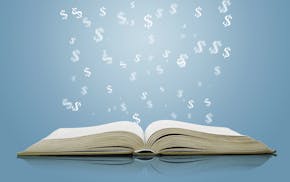Even if you have decades to work until retirement, the stock market's downward trajectory is unsettling. Last week, financial planners shared advice for near-retirees about how to invest their 401(k) contributions. The experts were also careful to remind me that everyone's financial situation is different, so their suggestions may not be right for you. I asked them last week how a person like me -- with 30-plus years before I sit on my porch all day -- should position the nest egg. Nate Wenner, certified financial planner for Wipfli Hewins Investment Advisors. As Wenner explained, part of his job is making sure that clients don't switch up their long-term investment plans just because the market is behaving badly. You didn't think stocks always went up, did you?
For someone with several decades until retirement, Wenner suggests having between 80 and 100 percent in stocks because "that's your greatest opportunity for growth." If you are investing 90 percent of your contribution in equities, he suggests this mix: About 40 to 50 percent in a large company stock fund, 15 to 17 percent small-cap stock fund, 20 to 24 percent international developed market mutual fund, 7 to 8 percent emerging market stocks. For the bond portion, Wenner says to stick with investment-grade corporate bonds and government bonds for two-thirds of the bond portfolio and the rest in foreign bonds and high-yield, higher-risk bonds.
If you aren't thrilled with your workplace retirement fund options, Wenner advises you to think about opening an after-tax account such as a Roth IRA after you invest enough in your 401(k) to get the matching money your employer hopefully offers. "When you get outside the 401(k) you get a little more flexibility," he said. Accessing the cash without penalty is also easier, but Wenner warns against thinking of a Roth IRA or brokerage account as a retirement fund and a savings account. Otherwise, you'll be tempted to tap it for that big-screen TV you've been coveting.
Martha Pomerantz, co-chair of Lowry Hill's investment committee. Pomerantz's advice for young workers? "Sign up for your 401(k) and never look back." For those with a long time horizon, Pomerantz would go for 100 percent in stocks -- 70 percent in a Standard & Poor's 500 index fund and 30 percent in an international fund. Index funds are a good choice because expenses, which shave points off your return, are lower.
If you want to get fancier, Pomerantz would put 35 percent of the U.S. stock allocation in the S&P and the other 35 percent into a managed mutual fund "that has a record of good stock selection over time."
She said she would avoid investing in specific sectors or alternative asset classes. Investors "get some exposure naturally by being part of the broader stock market" and owning companies in the energy business, for example.
Bill Reichwald, managing partner, Thrivent Financial for Lutherans. His priceless advice for young investors? "Do yourself a favor and quit looking every day" at your retirement portfolio. Also, "focus on time [in the market], not [market] timing." In other words, keep investing your money every paycheck into your retirement plan and stop fixating on whether to get out.
If you're new to investing, Reichwald says to figure out how much risk you can handle. Try using your retirement plan provider's online questionnaire. If you have little knowledge about stocks and little desire to learn (although, like it or not, I think you should have a basic understanding, as we all need to be stewards of our retirement funds), consider a "set-it-and-forget-it" fund such as an asset-allocation fund or lifestyle fund. These funds pick your mix of investments based on risk tolerance or your planned retirement year.
More and more 401(k)s are adding these options to their fund rosters.
For a snapshot of how Thrivent's asset allocation funds have changed their investments in recent weeks, I checked in with Patrick Egan, Thrivent's director of asset-management marketing. For the company's aggressive portfolio, it raised its target allocation for small- and mid-cap stocks by a couple of percentage points to approximately 26 percent of the overall portfolio. Smaller companies "typically lead more out of downturns," Egan said. On the flip side, Thrivent is reducing its international stock market exposure from 25 percent to 21 or 22 percent, in part because Egan expects the U.S. dollar to rally against the euro.
For those of us playing along at home, Egan recommends rebalancing. "If you have cash, money market, or Treasury-dominated bond funds, they're going to take up a much bigger percentage of your portfolio" than you intended because of how far stocks have fallen. It may be hard to stomach, but Egan says now's the time to "reposition for when stocks claw back."
How, if at all, have you tweaked your portfolio? Tell Kara McGuire • 612-673-7293 or kara@startribune.com.


